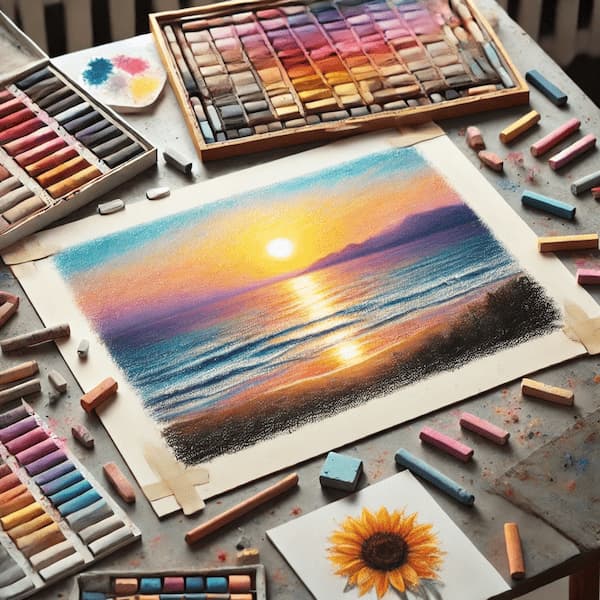Hello, artenauta! On this occasion we would like to talk to you about a topic that is as interesting as it is useful for designing the appearance of your works, according to the effect you want to create with them in the viewer: the color psychology.
Have you ever wondered why hospital walls are usually white or green? Or why are fire extinguishers always red?
Colors not only have an aesthetic effect, but also influence our emotions and thus our behavior and mood.
Color, depending on its hue, saturation and brightness, activates certain areas of the brain, causing certain emotional effects (for example, warm tones can make us feel more active or excited, while cool tones tend to make us feel calm).
While it is true that the interpretation we make of each color and the effect it has on our mood is quite subjective, as aspects such as previous experiences, cultural aspects or the traditional use that has been given so far (for example, in the West, the relationship between grief and the color black) influence; there are studies that show that, for example, the color red causes our heart rate to accelerate and, thus, we increase the amount of adrenaline produced, which makes us feel more energetic.
Knowing the meaning of colors, as well as the effect they can have on the viewer, will help us to give our works the expressiveness we are looking for, being more coherent with what we want to transmit.
Although, as we said before, the interpretation of color is marked by a great subjectivism, we leave you a list with the associations between color and symbolism most commonly accepted in the West:
White
: purity, virtue and cleanliness.- Black: Sobriety, elegance, formality, mysteries, the unknown, death.
- Gray: Tenacity, peace, tranquility
Blue
seriousness, cleanliness, confidence, tranquility, freshness, sadness
Red
Passion, strength, vitality, danger, energy, aggressiveness, virility.- Yellow: Energy, joy, happiness, power, wealth, anger, betrayal, envy
Green
: nature, youth, hope. Soft greens tend to be calming, while stronger shades encourage activity.
Orange
Energy, warmth, boldness, sensuality, the divine.- Pink: Soft pinks are associated with the concepts of sweetness, delicacy, innocence and pure love. Stronger tones are related to romance, love, passion.
Purple
sophistication, elegance, spirituality, nostalgia, mystery, royalty.
Taking into account these connotations, when creating our work, depending on the meaning we want to give it and the emotions we want to transmit and awaken in the viewer, we will choose one tonality or another.
For example, if we want to reflect action or arouse intense, passionate emotions, we will not use blue; if, on the contrary, we want to transmit with our work a deep internal state of decay or depression, this color is perfect.
Understanding and assimilating
Color Theory
is of vital importance in order to work with paint and obtain the desired results, avoiding unnecessary waste of pigments and achieving much more vibrant and realistic finishes.
To learn how to handle coloras well as all the techniques and materials you need to know to paint like a real professional, we recommend you to visit our Painting Course, where we teach you all the concepts, techniques and materials to become a true artist, finding and developing your own style and reaching wherever you want.


















